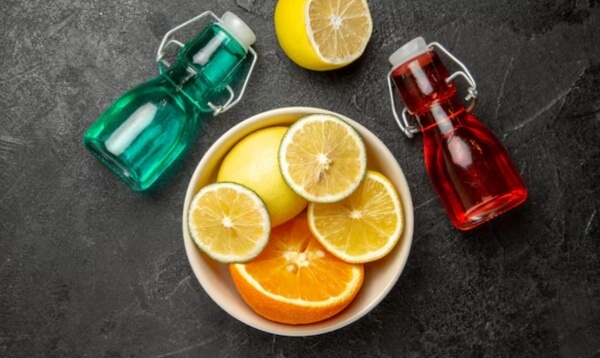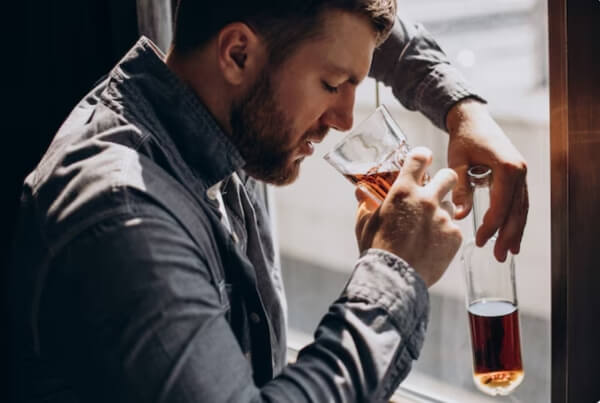
Everybody loves a glass or two of strong drinks to take the edge off and help you loosen up. Alcohol has positive and negative effects on the body. Consuming moderately can help you have a fun night of laughter and joy with friends or family. However, when you abuse it daily, you are at a high risk of developing an alcohol dependency. Millions of people around the world deal with this problem and need an urgent alcohol detox. Rehab is not always the answer because it is an expensive venture that does not ensure results. There are different kinds of home remedies that you can try.
Since alcohol detox involves not only physical but also psychological factors, it is good to consult with an expert. Your family also needs to be up-to-date with the process and, hopefully, the healing transformation that your body is going to be going through. Make sure that your friends also know that they should be mindful about how much they drink around you. You should still stay social to keep you mentally sane but you should avoid visiting bars and late-night clubs. Of course, not everyone who wants to undergo an alcohol detox is addicted. You might just want to tone your body and purify the liver and pancreas. The body can also cleansed with the help of organic supplements that suppress the brain from wanting strong beverages, like the Alcotox drops.
How to detox from alcohol? How long does it take? What are withdrawal symptoms and how do they fit into a timetable? Which are the best natural ways to perform liver detoxification? Which are the best 3- and 7-day liver cleansing diets? What is delirium tremens? What is the Kindling effect?
Read more about alcohol detox and how to do it properly in this article!
A Brief History of Alcohol
Here are some interesting facts about alcohol and the different types of beverages:
- The Alcohol in Alcoholic Beverages, Such as Beer, Wine, & Spirits Is Called Ethanol (Ethyl Alcohol);
- It Is Produced Naturally from Agricultural Products, Such as Grains, Fruits, & Vegetables;
- Ethanol Is Made Up of Carbon, Hydrogen, & Oxygen;
- A 125 ml. Glass of Wine Contains 90 Calories;
- A 300 ml. Jug of Beer Is Rich in 129 Calories;
The history of alcohol and its use has, according to various historical documents, very old roots. The first noted alcoholic beverages were fermented. Both beer and wine appeared, according to experts, almost at the same time, about 6,000 years ago. Beer was a very popular drink in Egypt, while in Ancient Greece and Rome, wine was the drink of choice. However, the wine was consumed mixed with water, not because of the euphoria it causes but as an additive necessary to improve the quality of the water.
In ancient times, distillation was a very common practice, used mostly in creating much-needed perfume. At first, the technique was relatively simple – a layer of wool containing lanolin was placed in a vessel in which aromatic plants or various volatile substances were placed. Under this covering, the aromatic vapors mingled and absorbed into it. The wool was then pressed and thus the perfumed oil was created.
Later, various vessels appeared, the most modern of which was called the Alembic which appeared in Alexandria, Egypt. Through contact with the cities closest to the Arab world, Sicily and Spain, the technology of distillation also penetrated Europe. Two vigilant Catalans became famous thanks to the acquired knowledge about obtaining a product called ‘spirit’ or ‘water of life’ – eau de vie. The product spread very quickly in European countries. In Scotland. it was called ‘wisce beatha’, hence the name ‘whiskey’.
Keep in mind that the Heparix capsules for complete liver and pancreatic detoxification can help you subdue and eliminate the desire to drink alcoholic beverages!
How to Detox from Alcohol at Home

Here are some useful tips on how to perform a successful alcohol detox at home:
- Make Sure That Your Menu Is Richer in Antioxidants, Minerals, Vitamins, & Amino Acids, As They Will Give Strength to Your Body;
- Drink More Water, As Some Side Effects May Include Excessive Sweating & Dry Mouth Syndrome;
- Create a Peaceful Environment That Will Relax Your Mind & Prevent Mood Swings & Depressive Episodes;
- Throw All Alcoholic Beverages Out & Let Someone Else Do Your Grocery Shopping for You;
- Do Not Swap One Craving for Another – Consume As Few Sweets As Possible;
The goal of alcohol detox is to remove all traces of accumulated toxic substances. Once this happens, the body begins to recover quickly and the existing side effects of alcohol addiction begin to fade. Clients feel that their strength is gradually returning and the pain accompanied by symptoms of discomfort begin to disappear.
The most important thing about how to detox from alcohol at home is to create a nice and friendly environment. People who do it should look for new hobbies or rediscover old ones that will take their mind away from the thought of drinking. This will speed up their recovery. Maintaining a balanced menu, full of nutrients, like amino acids and vitamins, to speed up the regeneration of liver and brain cells. If you need additional help, you can always turn to the Devitox capsules.
Alcohol Withdrawal Symptoms & Timeline
Alcohol withdrawal symptoms typically appear in the order, listed in the following alcohol withdrawal timeline:
- Stage 1. It begins about 6-8 hours after the last drink one had and includes nausea, insomnia, stomach discomfort, and headache;
- Stage 2. Symptoms start about 24-72 hours after you quit drinking and can lead to an elevation in blood pressure levels, heartburn, mood swings, and mental confusion;
- Stage 3. This stage begins 4 days after drinking has been discontinued and may include hallucinations, fever, and an agitated psychological state.
Alcohol withdrawal can manifest itself in two groups of symptoms – physical and mental. Physical symptoms are characterized by a rapid pulse, breaking out in a cold sweat on the face and body, trembling of the eyelids, lips, and hands, tightness in the heart area, and increased blood pressure. Mental symptoms can be easily irritable, feeling depressed for no reason, feeling anxious, feeling tense, senseless fear, and an overwhelming desire to drink.
What Causes the Alcohol Detox Timeline

Anyone who regularly attended biology classes in high school knows that the brain and the human body have the function of adapting to the presence of alcohol in the body. It is the central nervous system (CNS) that tries to compensate for it. In general, we know that alcoholic beverages have a depressing effect on the CNS and its functions. Most of the alcohol detox timeline effects are explained by their interaction with the various neuroreceptors and neurotransmitters.
Or to put it in a more accessible language – when consuming large amounts of alcohol over a very long period, the drinker’s body fights its natural battle with alcohol in an attempt to protect its internal stability. As a result of the symptoms, described in the alcohol detox timeline begin to manifest themselves. If you want to make them less severe, you can also rely on the Liverin capsules that will restore your internal and mental balance.
What Are Delirium Tremens
Delirium tremens are one of the most commonly registered symptoms when you quit drinking. Alcohol withdrawal or alcohol withdrawal syndrome is a reaction of the CNS when stopping prolonged excessive consumption. This is accompanied by attacks of tremors, agitation, confusion, nausea, sweating, vomiting, insomnia, convulsions, fever, tachycardia, hypertension, and hallucinations.
Alcohol withdrawal symptoms and the delirium tremens they include were described as early as 400 BC by Hippocrates. The syndrome is believed to have become a common problem after 1800. The problem can occur in anyone dependent on alcohol. Both after stopping excessive drinking and after a planned or unplanned reduction in the dose of alcohol.
Alcohol withdrawal is also known as withdrawal syndrome. Withdrawal symptoms appear 6-24 hours after the last drink. About 4% of people with withdrawal develop severe symptoms and 15% of patients with severe symptoms die. If you don’t want to fall into this statistic, make sure to take the ParaPure detox complex.
3- or 7-Day Liver Detox Diet – How to Do It
Here is how to do a 3- or 7-day liver detox diet:
- Avoid processed foods, caffeine, & alcohol.
- Focus on whole, preferably organic, foods, including vegetables, fruits, whole grains, beans, nuts, seeds, organic meats, fish, eggs, & raw oils.
- Avoid common sources of food sensitivities and allergens, including gluten & sweet temptations.
- Drink 8-10 glasses of filtered water a day.
- Get enough rest & sleep.
You may probably wonder why it is good to do 3- or 7-day liver detox diets once every couple of months. Well, frequent abuse of alcohol leads to the destruction of liver cells. This, in turn, causes cirrhosis, alcoholic hepatitis, and cell mutation. These conditions usually progress from fatty liver (steatosis) to alcoholic hepatitis and cirrhosis. About 20% of people who abuse alcohol develop fatty liver disease. They are usually reversible with abstinence. Alcoholic hepatitis is an inflammation that causes degeneration of the liver and can eventually progress to cirrhosis. People who regularly consume alcohol have an additional risk of developing liver disease if they have an infection or if they are genetically predisposed to liver problems.
The Kindling Effect or Phenomena in Alcohol Withdrawal
Many alcohol addicts experience more than one or two withdrawals during their illness. In these cases, the Kindling effect or phenomenon is most often observed. Kindling is a phenomenon in which, after multiple repeated alcohol detoxifications, an aggravation of withdrawal symptoms occurs. For example, heavy drinkers may initially have no withdrawal symptoms.
With each longer period of abstinence, they gradually develop and become more severe, eventually developing delirium tremens with convulsive seizures. Therefore, each period of abstinence in alcoholics should not be taken as an individual case. It is part of a long-term process that leads to the strengthening of withdrawal symptoms after each subsequent case.

5 Foods That Cleanse the Liver
Here are 5 foods that help your body cleanse itself from alcohol toxicity:
- They are excellent sources of Vitamin E. This is a powerful antioxidant that counteracts the oxidative stress associated with fatty liver disease.
- Bile helps transport toxins to remove them from the body, so blocking the flow of bile can cause it to build up and damage the gland. Artichokes contain phenolic derivatives that have been used for centuries to stimulate bile flow and protect the liver.
- Deep-hued fruits (blueberries, blackberries, and raspberries) are not only high in fiber but also contain powerful antioxidant phytochemicals called anthocyanins.
- The root vegetable is valued for its betalain pigments which counteract inflammatory processes and support the regeneration of cells in the liver. Beets are also rich in betaine, which helps the body’s cells neutralize toxins, and pectin, a type of fiber that binds and removes them.
- Cruciferous vegetables contain sulfur-containing phytochemicals called glucosinolates which protect the body from chronic diseases and help it eliminate toxins. Studies show that drinking broccoli sprout water activates enzymes that help capture pollutants from the bloodstream and flush them out through the urine. Consuming broccoli slows the progression of fatty liver.
Alcohol – a Friend & a Foe
Everybody loves to have a good time once a week. But if your alcohol consumption starts consuming your life and gets the best of you, it is time for a break. Make sure that you control your bad habits. Having a glass of wine or a jug of beer now and then is nothing to worry about. However, you should be careful not to let it destroy your life, work, and personal relationships. Drink moderately and smartly and you will be able to make alcohol a friend and not a foe.



